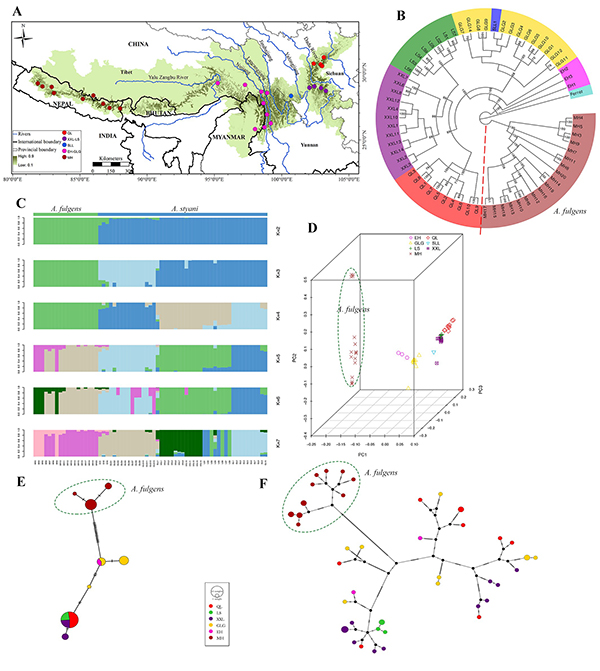The red panda (Ailurus fulgens) is an endangered mammal endemic to the Himalaya and Hengduan Mountains, and its distribution spans China, Myanmar, Bhutan, India and Nepal. Based on the morphological differences, since 1902 the red panda has been classified as two subspecies, Himalayan subspecies (A. f. fulgens) and Chinese subspecies (A. f. styani). Recently, on the basis of the morphological differences and geographical distribution, the taxonomist Colin Groves updated the two subspecies into two distinct species, Himalayan red panda (A. fulgens) and Chinese red panda (A. styani). However, the subspecies or species classification has remained controversial for a long time because, on the one land, the discriminating morphological characteristics were inconsistent with their geographical distributions; on the other hand, the classification still lacked the support from genetic evidence. In addition, the detailed evolutionary histories of red panda subspecies or species have remained unclear.
To clarify the above scientific problems, a research team led by Prof. Fuwen Wei from Institute of Zoology, Chinese Academy of Sciences, analyzed the genome resequencing data of 65 wild red pandas from seven geographical populations of two species, mitochondrial genomes of 49 red pandas, and Y chromosome SNP data of 49 male individuals, using population genomics methods. All the results from the three types of markers found substantial genetic divergences between two species, and no sharing was found for the haplotypes of mitochondrial genome and Y chromosome SNPs. These findings clearly supported the classification of two phylogenetic species, Himalayan red panda (A. fulgens) and Chinese red panda (A. styani). Further analysis found that the Yalu Zangbu River, rather than the Nujiang River, was most likely to be the geographical boundary between two species, which explained the previous observations that the discriminating morphological characteristics were inconsistent with their geographical distributions.
Furthermore, the research team reconstructed the demographic and divergence histories of two species based on the genome resequencing data. The results revealed obviously different demographic histories for the two species: the Chinese red panda experienced two population bottlenecks and one large population expansion, whereas the Himalayan red panda suffered from three bottlenecks and one very small expansion. These two species started to diverge after the serious population bottleneck caused by the Penultimate Glaciation (0.3 to 0.13 Mya).
In contrast to the Chinese red panda, the Himalayan red panda had the lowest genetic diversity, the highest linkage disequilibrium and higher genetic load, highlighting the urgency to protect this endangered species. These findings have important conservation implications for wild red panda conservation, pedigree construction and interbreeding avoidance of captive red pandas.
This study entitled “Genomic evidence for two phylogenetic species and long-term population bottlenecks in red pandas” has been published online in Science Advances on February 27, 2020.
This study was supported by the grants from Chinese Academy of Sciences, the National Natural Science Foundation of China, Ministry of Ecology and Environment of China, and etc.

Figure. Population genetic structure based on whole genomes, Y chromosome SNPs, and mitochondrial genomes of two red panda species (Chinese red panda A. styani and Himalayan red panda A. fulgens)

